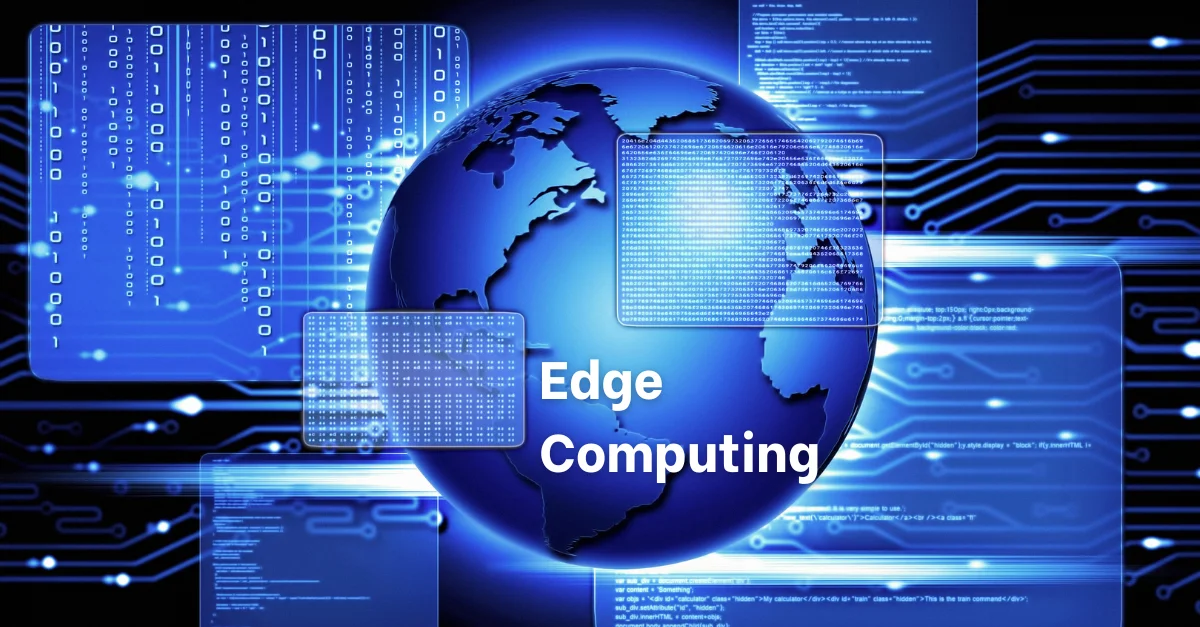Edge computing is revolutionizing the way we handle data by bringing computation closer to where the data is generated, rather than relying solely on centralized cloud servers. This decentralization can significantly improve latency and performance, especially in real-time applications. Let’s explore how edge computing achieves these enhancements and why they matter in various use cases.
1. Reduced Latency: Bringing Computation Closer to the Source
Latency refers to the delay between the initiation of an action and the response to that action. For real-time applications such as autonomous vehicles, industrial automation, or online gaming, minimizing latency is critical to ensuring smooth, responsive experiences. Here’s how edge computing helps reduce latency:
- Proximity to End Devices: Edge computing processes data at or near the source of generation—often on the device itself or within a nearby edge server—rather than transmitting it to a distant cloud server. This eliminates the need for long-distance data travel, significantly reducing the time it takes to process and respond to data.
- Faster Decision-Making: In real-time applications like augmented reality (AR) or robotics, immediate data processing is essential for decisions to be made within milliseconds. Edge computing minimizes the round-trip time that would otherwise occur in cloud-based systems, enabling quick, local decisions without waiting for a cloud server’s response.
2. Enhanced Bandwidth Utilization: Reducing Network Congestion
Real-time applications often rely on large amounts of data being transmitted quickly. Cloud-based systems, especially in regions with limited bandwidth or unreliable network connections, can suffer from network congestion, which exacerbates latency and reduces overall performance. Edge computing helps in the following ways:
- Local Data Processing: By processing data locally, edge computing reduces the need to send large volumes of data to remote data centers. This not only alleviates network congestion but also ensures that only essential data is transmitted, allowing bandwidth to be used more efficiently.
- Offload Non-Critical Tasks: Edge computing enables non-critical tasks (like data aggregation or filtering) to be handled locally, so only relevant, processed data is sent to the cloud or central server. This reduces strain on the network and improves the performance of critical real-time tasks.
3. Reliability and Availability: Ensuring Consistent Performance
Real-time applications require high availability and reliability to function effectively. Cloud computing, while powerful, may experience downtime or disruptions due to network issues or server failures. Edge computing can mitigate these concerns:
- Decentralized Infrastructure: With edge computing, multiple edge nodes are distributed across a wide area, which provides greater redundancy and ensures that the application can still function even if one node goes down.
- Local Processing During Outages: In scenarios where a network connection to the central cloud is lost, edge computing allows local processing to continue uninterrupted. For example, in an industrial automation scenario, a local edge node can still manage operations even if the central cloud is temporarily unavailable.
4. Faster Data Processing: Enabling Real-Time Analytics
Real-time applications like video surveillance, smart cities, and autonomous vehicles rely on continuous data streams that need to be analyzed on the fly. Edge computing’s ability to process data immediately at the source significantly enhances performance:
- Real-Time Analytics: Edge computing enables continuous, real-time analytics by processing data locally, ensuring that insights and decisions are generated instantly. For example, in autonomous vehicles, edge computing allows for the immediate analysis of sensor data, enabling the car to react to obstacles or changing conditions without delay.
- Machine Learning at the Edge: With edge computing, machine learning algorithms can be deployed directly at the data source, allowing for faster processing of real-time data. This is especially beneficial in applications like predictive maintenance, where immediate analysis of sensor data can prevent machine failure or identify potential issues.
5. Scalability: Supporting Growing Data Demands
As the number of connected devices and real-time applications grows, so does the demand for processing power and bandwidth. Edge computing addresses this challenge by distributing the workload across multiple edge nodes, which allows for greater scalability compared to centralized cloud systems:
- Distributed Processing Power: Edge computing systems can scale dynamically by adding more edge nodes or processing power at the edge as demand increases, ensuring that latency and performance remain optimal even as the data load grows.
- Efficient Resource Allocation: With edge computing, resources can be allocated based on proximity and need. This allows for more efficient management of computational resources and bandwidth, ensuring that real-time applications continue to perform well regardless of increasing data volumes.
6. Key Use Cases Benefiting from Edge Computing’s Latency Reduction
- Autonomous Vehicles: Self-driving cars rely on real-time data from sensors like cameras, LIDAR, and radar to make split-second decisions. Edge computing enables the car to process this data locally and make real-time decisions without waiting for cloud-based processing, which is critical for safe operation.
- Augmented Reality (AR) and Virtual Reality (VR): For immersive experiences like AR and VR, latency must be minimized to avoid lag and ensure that virtual elements align with the user’s movements. Edge computing processes the data locally to provide seamless, low-latency interactions.
- Smart Cities: Applications like traffic management, real-time surveillance, and environmental monitoring require quick data processing. Edge computing ensures that these systems can react immediately to real-time events, improving safety, efficiency, and urban management.
- Healthcare: In remote patient monitoring or telemedicine, edge computing ensures that data collected from wearable devices or sensors is processed in real-time. This allows healthcare professionals to make prompt decisions, which can be a matter of life or death in critical situations.
Conclusion
Edge computing plays a vital role in enhancing the performance and reducing latency for real-time applications. By processing data locally, closer to the source, edge computing eliminates the delays caused by long-distance communication with centralized cloud servers, optimizes bandwidth usage, improves system reliability, and supports scalability. As industries continue to embrace real-time applications, the ability to harness the full potential of edge computing will be a game-changer in delivering faster, more efficient, and reliable services.
#EdgeComputing #LatencyReduction #RealTimeProcessing #LowLatency #LowLatency #LowLatency #LowLatency #LowLatency
